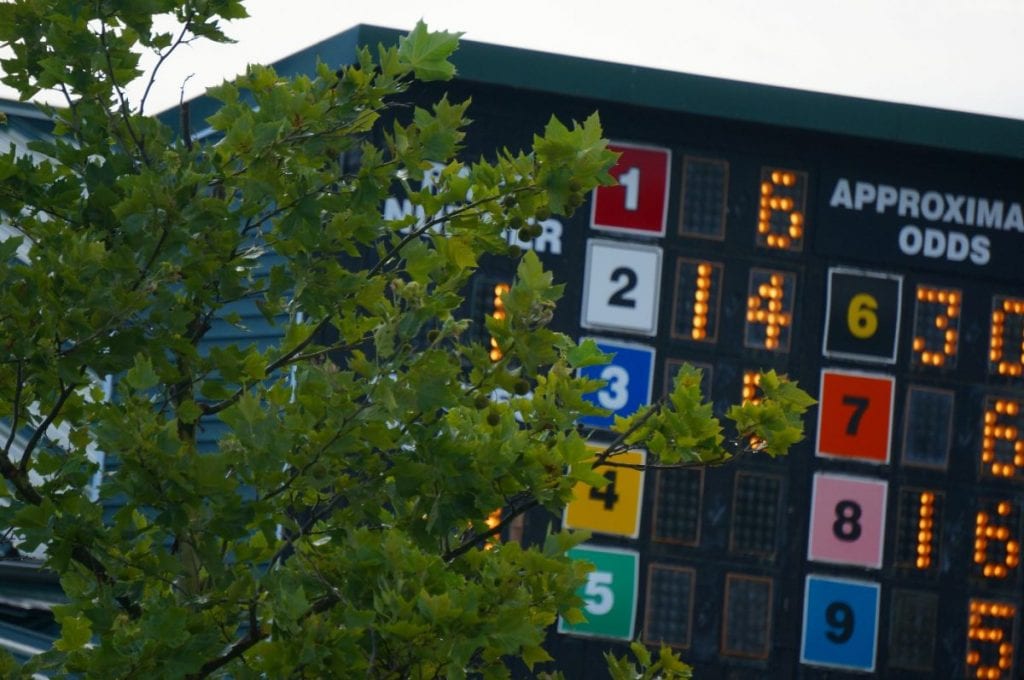WAGERING HANDLE FLAT DESPITE FEWER RACEDAYS

Total wagering on U. S. Thoroughbred races was down just about one percent in 2020. That small decline that led some in the industry to celebrate its resilience in the face of a pandemic that, among other and more serious matters, saw the sport conduct roughly 25% fewer races and race days in 2020 than it did in 2019.
“The horse racing community is extremely resilient as borne out by the fact that despite the widespread and negative impacts of the coronavirus pandemic, pari-mutuel wagering on U.S. races held steady in 2020 at nearly $11 billion,” the National Thoroughbred Racing Association (NTRA) said in a statement.
“We thank both our customers and all of our essential participants on the backside and beyond for keeping the sport going and supporting the industry during what continues to be an unprecedented and challenging period, not only in the United States but around the world.”
In all, wagering checked in at about $10.9 billion, down 0.98% from the $11 billion-plus the industry generated in 2019. The data was released Tuesday by Equibase.
The Covid-19 pandemic struck the nation, and consequently the racing industry, full force in March 2020. That led to widespread closures that began in March and continued until the end of May.
- Great Notion colt takes top honors at MHBA Yearling Show
 A Great Notion colt took the top spot and the Merryman family dominated at Sunday’s 91st annual Maryland Horse Breeders Association Yearling Show.
A Great Notion colt took the top spot and the Merryman family dominated at Sunday’s 91st annual Maryland Horse Breeders Association Yearling Show.
As a result of those closures, the number of races in the first half of the year fell by 37.5% versus the prior year; and the number of race days was down by more than 38%. Handle in the first half of the year was down about 11%.
All those numbers picked up in the second half of 2020, as the industry recaptured its footing.
One factor in the growth would be field size, which itself surely was assisted by the decline in races and race days. The average field grew by five percent, from 7.53 runners to 7.94.
Thus, looked at from one perspective, the industry did surprisingly robust business at the windows in 2020. Wagering per race day rose by nearly one-third to more than $3.3 million.
From another perspective, however, the data could be viewed as continuing the sport’s long stagnation. Since reaching a high of more than $15 billion in 2003, total wagering on Thoroughbred racing has slumped to roughly $11 billion this year.
- De Francis Dash “a lasting tribute”
 Joe De Francis sought to create a race that would be a “lasting tribute” to his father. But he’s not sure he likes it being called historic.
Joe De Francis sought to create a race that would be a “lasting tribute” to his father. But he’s not sure he likes it being called historic.
That’s a decline of 27%, and it looks even worse when calculated in constant dollars. Had racing merely kept pace with the consumer price index, wagering would have been about $21.3 billion in 2020, instead of the $11 billion it actually was.
More bad news: even though wagering largely held steady, purses fell by 25.53%. Just less than $870 million in purses were awarded in 2020 – down from more than $1.1 billion a year ago. Purses per race day held steady at $263,408. One likely culprit: the closure for part of the year of many casinos, which in many states support racing purses.
In the end, for the racing industry, as for many Americans, what you can say about 2020 is that it wasn’t a great year – but it could have been worse.
US WAGERING AND ECONOMIC INDICATORS
| Indicator | YTD 2020 | YTD 2019 | % Change |
| Wagering on U.S. Races* | $10,925,226,444 | $11,033,824,363 | -0.98% |
| U.S. Purses | $869,774,080 | $1,167,920,667 | -25.53% |
| U.S. Race Days | 3,302 | 4,425 | -25.38% |
| U.S. Races | 27,700 | 36,207 | -23.50% |
| U.S. Starts | 220,006 | 272,553 | -19.28% |
| Average Field Size | 7.94 | 7.53 | +5.51% |
| Average Wagering Per Race Day | $3,308,669 | $2,493,520 | +32.69% |
| Average Purses Per Race Day | $263,408 | $263,937 | -0.20% |
LATEST NEWS















